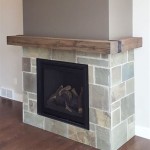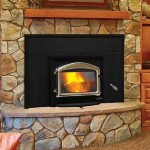Stone Backsplash: Elevating Your Fireplace Design
A stone backsplash is a visually striking and functionally sound addition to any fireplace. Serving as a focal point, it enhances the aesthetic appeal of the surrounding living space while protecting the wall from heat and potential damage. The selection of stone type, size, and arrangement offers a vast array of design possibilities, catering to diverse architectural styles and personal preferences. This article explores the benefits, design considerations, installation basics, and maintenance aspects associated with incorporating a stone backsplash into fireplace design.
Aesthetic and Functional Advantages
The primary advantage of a stone backsplash lies in its ability to elevate the visual appeal of a fireplace. Natural stone offers inherent beauty, with unique variations in color, texture, and veining. This inherent characteristic allows for the creation of a truly one-of-a-kind feature in any home. Beyond aesthetics, a stone backsplash provides a practical barrier against heat, sparks, and soot. These elements, if left unchecked, can damage or discolor the wall behind the fireplace. By utilizing a non-combustible material like stone, the backsplash safeguards the structural integrity of the wall and reduces the risk of fire hazards.
Furthermore, a stone backsplash contributes to the overall thermal performance of the fireplace area. Stone absorbs and radiates heat, contributing to a more consistent and comfortable temperature within the room. This feature can be particularly beneficial during colder months, helping to supplement the fireplace's primary heating capacity. The durability of stone also ensures longevity, making it a worthwhile investment that will maintain its beauty and functionality for years to come. A well-installed stone backsplash resists wear and tear, requiring minimal maintenance to retain its pristine condition.
Finally, a stone backsplash can increase the property value. As a sought-after feature, a well-designed and installed stone fireplace surround and backsplash adds a touch of luxury and sophistication, which can be a desirable selling point.
Design Considerations: Stone Type, Style, and Layout
Selecting the appropriate stone for a backsplash requires careful consideration of several factors, including the overall design aesthetic, the fireplace's existing stonework (if any), and budgetary constraints. Popular options include granite, marble, slate, limestone, and fieldstone, each offering distinct visual characteristics and price points. Granite, prized for its durability and wide range of colors, provides a sophisticated and timeless look. Marble, known for its elegant veining and luxurious feel, is often chosen for more formal settings. Slate, with its natural cleaving and earthy tones, lends a rustic and organic appeal. Limestone, a softer and more porous stone, offers a warm and inviting ambiance. Fieldstone, typically sourced locally, provides a natural and rugged aesthetic, often incorporating a variety of shapes and sizes.
The style of the stone backsplash should complement the architectural style of the home and the existing fireplace design. For modern homes, sleek and minimalist designs using large format tiles in neutral colors are often preferred. Traditional homes may benefit from more intricate designs incorporating smaller stones or elaborate patterns. The layout of the stone backsplash is equally important. Common options include a full wall covering, a partial covering that extends a few feet above the fireplace opening, or a decorative band that highlights the fireplace surround. The size and shape of the stones can also significantly impact the overall aesthetic. Rectangular tiles arranged in a stacked or staggered pattern offer a clean and contemporary look, while irregularly shaped stones create a more rustic and natural feel.
Beyond the stone itself, consider the grout color and joint size. Grout color can either blend seamlessly with the stone or provide a contrasting accent. Smaller grout joints offer a more refined and polished look, while wider joints accentuate the individual stones and create a more textured appearance. The lighting within the room should also be considered, as it can significantly impact the appearance of the stone. Natural light enhances the colors and textures of the stone, while artificial lighting can be used to create specific moods and highlight certain features.
Installation and Maintenance Essentials
While a skilled DIY enthusiast may attempt the installation of a stone backsplash, professional installation is generally recommended to ensure proper adherence, alignment, and sealing. A professional installer possesses the necessary tools, experience, and knowledge to handle the complexities of working with natural stone, minimizing the risk of errors and ensuring a long-lasting and visually appealing result. The installation process typically involves preparing the wall surface, applying a layer of thin-set mortar, carefully positioning the stones, and then grouting the joints. Proper sealing is crucial to protect the stone from moisture, stains, and discoloration.
The maintenance of a stone backsplash is relatively simple, requiring regular cleaning with a mild detergent and water. Avoid using abrasive cleaners or harsh chemicals, as these can damage the stone surface. Periodic sealing is recommended to maintain the stone's protective barrier and prevent staining. The frequency of sealing depends on the type of stone and the level of usage. For porous stones like limestone and slate, more frequent sealing may be necessary. Inspect the grout joints regularly for cracks or damage and repair them promptly to prevent water penetration. Promptly wipe away any spills or stains to prevent them from setting into the stone.
Consider the fire safety regulations for your area. Different types of fireplaces have different clearance requirements for combustible materials. Check local building codes to ensure your stone backsplash meets all requirements. This might involve using non-combustible backing materials, or maintaining a specific distance from the fireplace opening.

Easy L And Stick Stone Fireplace Surround Sondra Lyn At Home

Modern Fireplace Wall Surround Tiles The Tile

Fireplace Feature Wall Ideas Queen City Stone Tile

Fireplace Stone On Edmonton Calgary S

Country Home For Entertaining In Rustic Luxury Natural Stone Kitchen Fireplaces Backsplash

Stone Veneer Interior Design Living Room Kitchen Bedroom Ideas More Buechel

Fireplace Dyi Project Stone Designs Stacked Fireplaces Faux

Fireplace Feature Wall Ideas Queen City Stone Tile

Stone Veneer Interior Design Living Room Kitchen Bedroom Ideas More Buechel

Best Stone Fireplace Ideas
Related Posts








